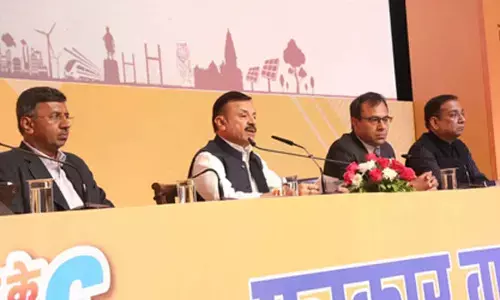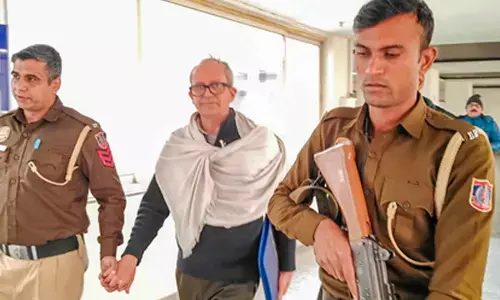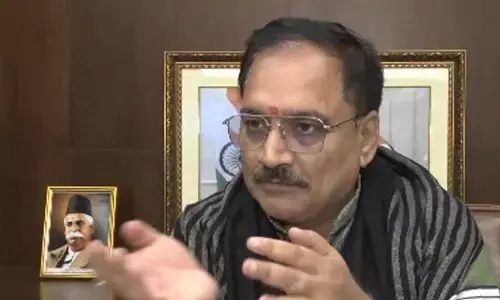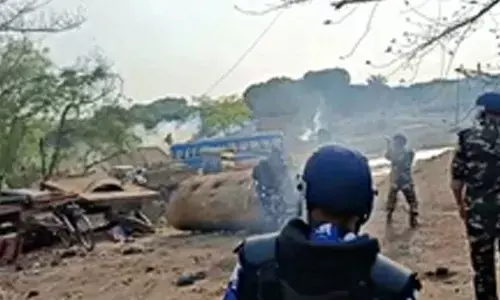Young population behind dip in India's Covid count?
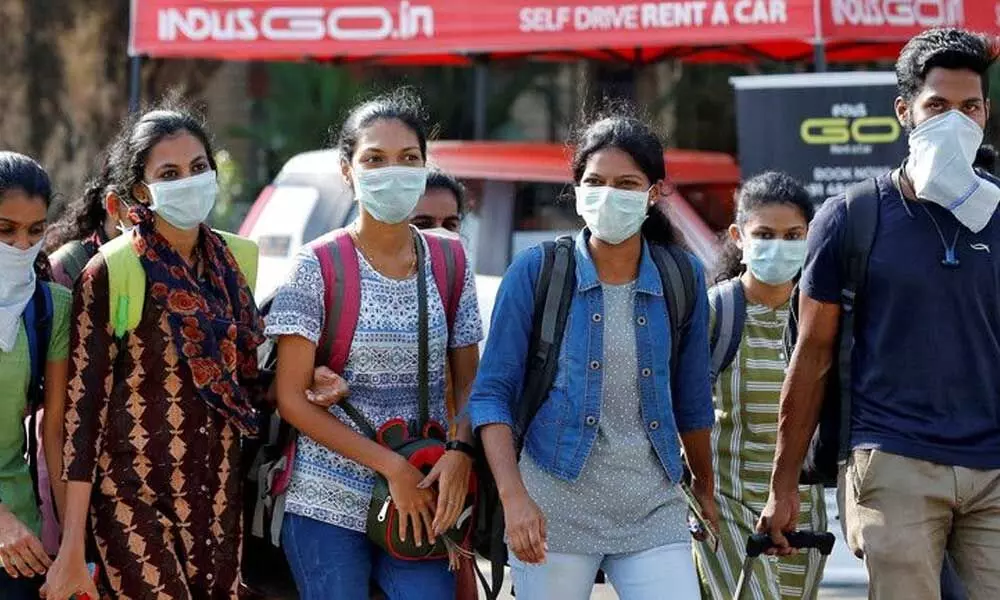
Young population behind dip in India’s Covid count?
The absolute number of people infected with Covid- 19 in India may never be known but much of the scientific community agrees the downward trajectory of the disease is real and can likely be attributed to ‘localised' herd immunity and a younger population
The absolute number of people infected with Covid- 19 in India may never be known but much of the scientific community agrees the downward trajectory of the disease is real and can likely be attributed to 'localised' herd immunity and a younger population. As scientists attempt to understand India's sliding Covid- 19 count, the country on Monday recorded 16,504 new Covid- 19 cases, more than six times lower than the highest daily spike of 97,894 on September 16.
While there is a glimmer of hope and India's Covid- 19 numbers are on a definite decline for a combination of reasons, a vaccination programme continues to be important, particularly given the presence of a mutant, more transmissible strain, several experts said while cautioning against infection upticks ahead. "It's not the absolute numbers, but the trajectory that is important," said Shahid Jameel, director, Trivedi School of Biosciences, Ashoka University, looking at India's Covid graph.
Noting that it is impossible and impractical to have true numbers during a pandemic, or even after that, unless everyone is tested, the virologist said Covid- 19 cases in the country have gone down steadily since the peak in mid-September.
Reflecting the national trend, Delhi's graph has also been on a downward slide with 384 fresh Covid- 19 cases recorded on Monday, the lowest in over seven months, raising hopes that herd immunity may have set in. Herd immunity is a form of indirect protection from infectious disease that sets in when a sufficient percentage of a population has become immune to an infection. "Nothing has changed drastically in testing or behaviour since mid-September. So relatively speaking, it's a downward trajectory," Jameel told PTI.
The lack of more travel and the distancing measures -- however poorly implemented -- may be keeping rates of spread somewhat lower in other less crowded neighbourhoods, he said. Given the large number of infections in the first wave, it is certainly conceivable that some population immunity has set in and it is difficult for the virus to transmit as easily as it had in the first round, said epidemiologist and economist Ramanan Laxminarayan.
For that reason, it is doubtful India will have a second wave as big as the first one, he explained. "India has been protected by its relatively young population -- 65 per cent of the country is under the age of 35 and infections in those age groups have likely slowed down overall transmission," Laxminarayan, founder and director of the Center for Disease Dynamics, Economics & Policy in Washington, told PTI.
Jameel added that while it is unclear what per cent infection or exposure is needed for herd immunity for Covid- 19, most epidemiologists believe it would be 60 per cent or above. "If that be the case, we may be closer to it in some but not all locations," Jameel said. He noted that it is hard to say if the first wave is ending and if there will be a second wave. "That depends on how many people have been infected. Considering that we went through two important periods without any significant upturn – Dussehra to Diwali festive season and Bihar elections – I think that there would be enough infected people and we will not see a second wave," said the virologist.
Referring to the second ICMR survey which showed an average 6.6 per cent positivity across 70 districts three months ago, Jameel said it translates to 90 to 100 million infected people. "Other surveys, e.g. urban centres, data from diagnostic company Thyrocare etc. put the number much higher -- 300 to 400 million," he said.
Positivity is the percentage of all coronavirus tests performed that are actually positive. Outbreak modelling for India, said Jameel, suggests about 30 per cent overall infection, with 50 per cent in large and densely populated cities. "What we are seeing is a complex mixture of high exposure in densely populated areas (cities) where the outbreak also moves faster, and low exposure in villages and rural districts where the outbreak may still be expanding, but doing so slowly," said Jameel, adding this will create a situation where the return to baseline will be prolonged.
Advising caution, Laxminarayan said there certainly seems to be a natural decline in the numbers of infections overall across most states, but that has been seen before in many other countries where there is now a rise in cases. Rath agreed with Laxminaryanan, saying the virus spread is not in the form of a uniform 'wave' but the result of very many variable local 'waves'.
"It is quite likely the spread of infection will 'plateau', so to say, and will be sustained at a relatively lower level," he said. Discussing a vaccine, Laxminarayan said everyone should get a shot, regardless of whether or not people have had a Covid infection. "Immunity through direct exposure can be variable and not as reliable as immunity acquired through vaccination," he said.
"Infection upticks are quite possible, so vaccinations are going to be very useful. And testing for pre-existing immunity before vaccination is not easy or cheap to implement," Rath added. The vaccination will in all likelihood be done without any consideration of excluding previously exposed people, he said. Jameel agreed. "You can always test before giving a vaccine, but that would double cost and logistics. It's easier to vaccinate everyone at risk, who is willing to be vaccinated," he added.
With a more contagious variant now in India and detected so far in 33 countries, it is not known yet how the transmission will play out, the scientists said. Now that vaccines are becoming available, they should be deployed. The experts also debunked the "myth" that the Indian population is genetically advantaged in tackling this virus better. Similar mortality rates, they said, are seen across all of South and Southeast Asia.
"Once we account for differences in age structure of population, there is not much difference in case fatality rates across countries, if measured correctly," Laxminarayan said. Rath concurred with Laxminarayan, saying there is no strong clear evidence that the illness is less severe in India compared to elsewhere. "I see no reason so far to invoke speculation about 'better immunity' or any genetic resistance in India. I have seen no evidence for either of those possibilities," he added.
The road ahead is still tricky. Now that the vaccines are rolling out and will cover large parts of the world over the next six-12 months, one other thing to watch out for are vaccine-escape mutants, said Jameel. "These would be viral variants that can escape vaccine generated immunity. This would only be possible by means of dense genomic sequencing, especially those who get infected even after getting vaccines," he added.
India's active caseload is now 2,43,953 with recoveries inching close to the one crore mark. According to Union Health Ministry data, the total number of recovered cases has surged to 99,46,867, which translates to a recovery rate of 96.19 per cent.












